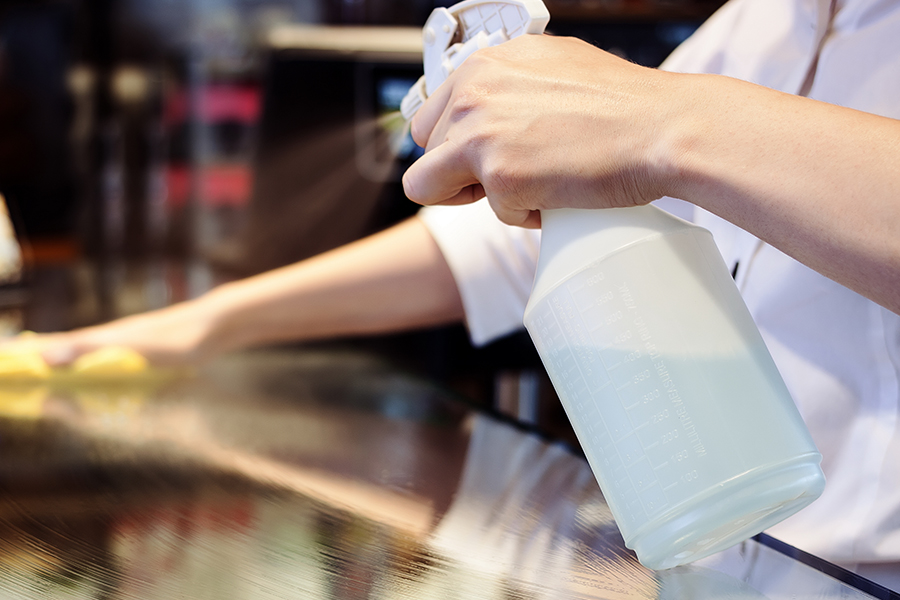
Refrigeration is the heart of most commercial kitchens. Keeping these workhorses in good condition and ready to keep food at proper temperatures is a necessity.
Of primary concern to most restaurateurs, is keeping your food safe for consumption. You don’t want to waste budget on food that has gone bad due to underperforming refrigeration. Serving safe to eat food is hugely important for the health of your customers. This is one of the reasons health inspectors check on temperatures of refrigeration and refrigerated food. You never want to get a low grade on a health inspection or even worse have a customer experience food contamination and get sick.
It’s not only essential to keep refrigeration clean for keeping foods at safe temperatures but vital to the overall performance of the equipment. Dirty refrigerators, coolers or freezers can lead to excessive energy consumption and strain on the machinery which could lead to the unit breaking down at the worst possible time.
All of these possibilities can be very detrimental to your business and put you in a bad situation. However, the good news is many breakdowns of commercial refrigeration and the horror of food contamination can be prevented with simple regular maintenance and cleaning. We have a cleaning guide that will help keep all of your commercial refrigeration working reliably and safely no matter the size.
Parts that Need to Be Cleaned and Maintained on Commercial Refrigeration
Exterior
To clean the exterior of your refrigeration unit, use a rag dampened with soap and water to wipe down the doors and sides. Carefully wipe off dust, grease and gunk from the covers that protect the condenser.
You should also check for any debris, boxes or other equipment that may be blocking airflow to the refrigerator. Air flow is essential to the motor maintaining proper temperatures.
Interior
For the interior of the cooler or freezer, simple soap and water will do the trick. Be sure not to leave any puddles of water behind.
Using harsh chemicals is never a good idea when cleaning a walk-in. Harsh chemicals tend to harm the metal surface over time. However if mildew or mold is present make a diluted bleach and water mixture and wipe gently with a rag or bristle brush.
Door Gaskets
Inspect the doors on a regular bases to ensure the seals are functioning well. A door that doesn’t seal will allow warm air to enter causing a buildup of condensation as well as make it difficult to cool the cabinet.
Door gaskets can be easily cleaned by wiping them down with a cloth, soap and water. If there are any tears make sure to replace as soon as possible to prevent possible damage to the compressor.
If damaged the gasket should need to be replaced quickly to prevent any damage to the door or over-exertion of the condenser.
Condenser Coil
The most important thing you can do for your refrigeration is to keep the condenser coil clean. The condenser coil itself should be cleaned at least once a month to keep free of dirt and dust buildup.
A great way to clean this part of the unit is to use a wet-dry vac. This allows you to clean the surface while also giving the ability to reverse the flow of air and blow out dirt that may be imbedded deeply in the coils. The outside can just be wiped off with a damp rag.
Condensers can be a pain to get to on some units. They are often found behind a cover on the top or bottom of the unit. Some prep tables or bottle coolers may have side mounted refrigeration so look for the removable covering on the front or side panel on those models.
Drain Lines
Cleaning your drain lines can be a very long process. Once a year it’s best to have a trained professional clean your drain lines checking that they are not clogged with debris or mold. While cleaning the service tech will generally also disinfect the inside of your unit.
Quick Tips
- Make sure to read the operation manual for your unit. It will tell you how often that particular machine needs to be cleaned and how to clean it. The manual is your best friend.
- Before using anything beyond soap and water to clean your refrigeration, be sure to remove food and food containers.
- Before cleaning condenser, drain lines, or evaporator always remember to unplug the unit for your own safety.
- Clean from the top down! Start at the ceiling, and work your way down the interior walls and shelves to the floor.
- Cleaning a commercial ice cream machine requires removing any parts that detach or come in contact with the ice cream or fingers. It’s also best to soak parts for 30 minutes in hot water with a tablespoon of sanitizer to kill additional bacteria and germs.
- Ice machine parts can wear out quickly. Keeping spare parts on hand can save your a lot of headache.
- Never use Petroleum Jelly to disassemble parts because it can cause the machine to break down and get contaminated easily. .
Put It Into Practice
As you see maintaining and cleaning your commercial refrigeration on a regular basis has many benefits to avoiding future problems. Cleaning helps prevent the unexpected breakdown, contamination, reduces your energy bill, can extend the life of the machine and so much more.
Don’t spend another minute stressing about passing your health inspections or unexpected breakdowns and instead take action to prevent these problems. Put these simple tips in your daily schedule and you will start to see the benefits.

